Download BECA 2011 Magazine [25MB, PDF] - Global Alumni ...
Download BECA 2011 Magazine [25MB, PDF] - Global Alumni ...
Download BECA 2011 Magazine [25MB, PDF] - Global Alumni ...
Create successful ePaper yourself
Turn your PDF publications into a flip-book with our unique Google optimized e-Paper software.
RE<strong>BECA</strong> <strong>2011</strong>the choice of boundary point locations. Thereason for this is that the values of the terms ofthe chosen function and its derivatives will varyconsiderably along the boundary. The higherorder terms of the series will attain a number ofmaxima and minima along the boundarycontributing to a similar variation to the boundaryconditions of the problem also.Altman in 1957 suggested a modification whichleads to the well known normal equation andeliminates almost entirely the problem ofmatching the boundary conditions mentionedearlier. In short, the modification consists inwriting many more boundary conditions thanthere are unknown constants in the selectedtruncated series. The resulting set of simultaneousequations containing the unknown constants isthen satisfied in the least square sense to get thevalues of the parameters.Formulation:If we write m boundary conditions for a functionwith n unknown constants (m is greater than n),in matrix form we get,A m n X n = R mwhere A m n is the coefficient matrix, X n theunknown parameters and R m is the m – foldvector of constants constituting the right hand sideof the boundary equations. We find a solutionvector X i of the equation system which minimisesthe sum of the squares of the residuals W m ,whereW m = A m n X n R mwhich can easily be shown to yield the final resultA T m n A m n X n = A T m n R m ……. ( 1 )which will be employed in the presentinvestigation. We shall demonstrate the efficacy ofthe method by solving a few plate problems withdifferent boundary conditions and thencomparing the results with exact solutions. Forthe problems of transverse bending of plates, wehave the basic differential equations, with theusual symbols as w s =qDwhere is Laplace’s operator.Since the general solution of this fourth orderpartial differential equation is available in polarcoordinates, we use the same for the solution ofproblems.w s = w 0 + R 0 +m 1Rm/cosm R sinm…….. ( 2 )m 1where w 0 is the particular solution andR 0 = A 0 + B 0 r 2 + C 0 log r + D 0 r 2 log rR 1 = A 1 r + B 1 r 3 + C 1 r – 1 + D 1 r log rR m = A m r m + B m r – m + C m r m + 2 +D m r – m + 2Application to plate problems:In the present illustrations, the method has beenused to solve the transverse bending of thin plateswith uniform loading and with the followingboundary conditions.Case I : Rectangular plate with three edgessimply supported and the fourthedge fixedCase II : Rectangular plate with two oppositeedges simply supported, the thirdedge free and the fourth edge fixed.Case III : Rectangular plate with three edgesbuilt-in and the fourth edge free.Case IV : Rectangular plate with three edgessimply supported and the fourthedge free.The origin is chosen at the centre of the plate andx – axis is taken as the axis of symmetry. With thischoice and noting the axis of symmetry and alsobecause the deflection and stress will be finiteanywhere in the plate, the final form of the series( 2 ) , writing B m in place of C m , reduces tow s =4qr A64D0B0r2m 1( AmRm Bmrm 2) cosm…. (3)20


![Download BECA 2011 Magazine [25MB, PDF] - Global Alumni ...](https://img.yumpu.com/48428488/60/500x640/download-beca-2011-magazine-25mb-pdf-global-alumni-.jpg)
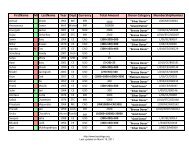
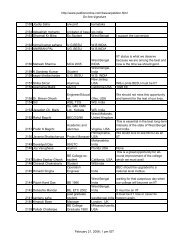
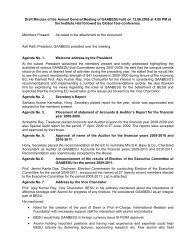
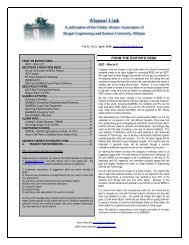
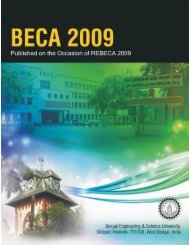

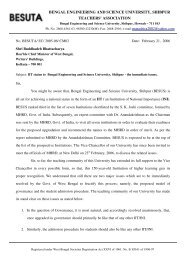
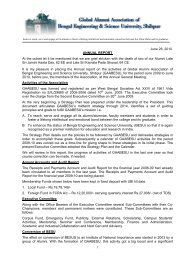

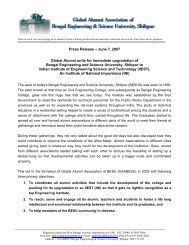

![Brochure [PDF] - Global Alumni Association of Bengal Engineering ...](https://img.yumpu.com/33102143/1/180x260/brochure-pdf-global-alumni-association-of-bengal-engineering-.jpg?quality=85)

